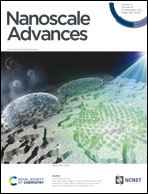Polyoxometalate-based nanocomposites for antitumor and antibacterial applications
Abstract
Polyoxometalates (POMs), as emerging inorganic metal oxides, have been shown to have significant biological activity and great medicinal value. Nowadays, biologically active POM-based organic–inorganic hybrid materials have become the next generation of antibacterial and anticancer drugs because of their customizable molecular structures related to their highly enhanced antitumor activity and reduced toxicity to healthy cells. In this review, the current developed strategies with POM-based materials for the purpose of antibacterial and anticancer activities from different action principles inducing cell death and hyperpolarization, cell plasma membrane destruction, interference with bacterial respiratory chain and inhibiting bacterial growth are overviewed. Moreover, specific interactions between POM-based materials and biomolecules are highlighted for a better understanding of their antibacterial and anticancer mechanisms. POMs have great promise as next-generation antibacterial and anticancer drugs, and this review will provide a valuable systematic reference for the further development of POM-based nanomaterials.

- This article is part of the themed collection: Recent Review Articles


 Please wait while we load your content...
Please wait while we load your content...